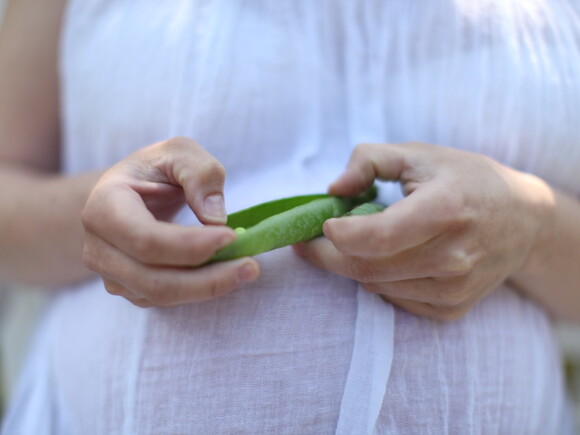Having a healthy baby means making sure you are healthy, too. One of the most important things you can do to help prevent serious birth defects in your baby is to get enough folic acid and iron every day — especially before conception and during early pregnancy.
What is folic acid?
Folic acid is a B vitamin (vitamin B9). It occurs naturally in foods such as dark green leafy vegetables, oranges, whole grains, patani, garbanzos and dried beans. Some breads, margarines and breakfast cereals are enriched with folic acid.
Why do I need folic acid in pregnancy?
Folic acid helps protect your unborn baby from developing neural tube defects such as spina bifida. It also helps prevent other birth defects, such as cleft palate or harelip.
Folic acid is good for you, too, as it works with vitamin B12 to form healthy red blood cells. Not having enough folic acid can cause you to develop a type of anemia called Folate-Deficiency Anemia. This is different from the more common type of anemia we know as Iron-Deficiency Anemia or IDA.
What is spina bifida?
Spina bifida happens when the protective covering that grows around an unborn baby's spinal cord doesn't close properly, leaving a gap. This can lead to permanent nerve damage, and sometimes paralysis.
The first 12 weeks of pregnancy is when your baby's brain and nerve system are forming and growing fast. Kaya it is important to take daily folic acid supplements during the first three months of your pregnancy and ideally, while you are trying to have a baby. Once you reach 13 weeks of your pregnancy (second trimester), you can stop taking the supplements if you want to, though continuing to take them won't harm you or your baby.
Which foods should I eat to get more folic acid?
Take a folic acid supplement even as you eat plenty of foods that are rich in folates - green leafy vegetables, liver and other glandular organs, dried beans and cereals are the best.
Why you need iron during pregnancy
Even before you're pregnant, your body needs iron for several reasons:
- Essential for making hemoglobin, the protein in red blood cells that carries oxygen to other cells.
- Important part of myoglobin (protein that helps supply oxygen to your muscles), collagen (protein in bone, cartilage, and other connective tissue), and many body enzymes.
- Good for maintaining your healthy immune system.
During pregnancy, you need a lot more of iron because:
- The amount of blood in your body increases during pregnancy by almost 50%, so you need more iron to make more hemoglobin.
- Extra iron is needed for your growing baby and placenta, especially in the second and third trimesters.
- Many women with insufficient stores of iron will need more when they get pregnant so as to avoid Iron-Deficiency Anemia. IDA during pregnancy is associated with preterm delivery, low birth weight, and infant mortality.
Food sources of iron
Due to the latest findings on the natural availability of iron, it is best to classify dietary iron according to origin:
- Heme iron comes from animal sources:
- Organ meats specifically liver, are rich sources of iron. Pork liver is the richest source at 14mg/100gm.
- Red meats and egg yolk
- Seafood (tulya, crabs, small shrimps)
- Nonheme iron comes from plant sources. They supply at least one-fourth of an adult’s daily iron needs (based on one average serving portion):
- Iron-enriched rice and pastas, iron-fortified cereals
- Whole grains and cereal with its natural bran
- Seaweeds like lato or gamet
- Legumes (munggo, black beans, red kidney beans, etc.)
- Green leafy (ampalaya leaves, kamote leaves, kulitis or spinach, gabi leaves, malunggay leaves, mustasa leaves, pechay, saluyot)
Take note! Heme iron is more easily absorbed by our body than nonheme iron.
Here’s a surprise – Alam n’yo ba na another source of iron is by cooking in your cast iron pot or pan? The iron from the cookware is transferred into the food being cooked. Interesting one,’di ba!
Co-written with RND JENNIFER NAVAJA
Sources:
Blencowe H, Cousens S, Modell B et al. 2010. Folic acid to reduce neonatal mortality from neural tube disorders. Int J Epidemiol 39(1):i110-21
Claudio, Virginia Serraon, Ofelia V. Dirige, Adela Jamorabo-Ruiz.Basic Nutrition For Filipinos. 5th ed. Manila: Merriam & Webster Book Store, 2004.
De-Regil LM, Fernández-Gaxiola AC, Dowswell T, et al. 2010. Effects and safety of periconceptional folate supplementation for preventing birth defects. Cochrane Database of Systematic Reviews (10): CD007950. www.onlinelibrary.wiley.com [Accessed May 2013]
Stanner S, Gibson-Moore H, Hall-Moran V. 2012. Virtual issue: nutrition during pregnancy. www.blackwellpublishing.com [Accessed April 2013]
Kelly D, O'Dowd T, Reulbach U, et al. 2012. Use of folic acid supplements and risk of cleft lip and palate in infants: a population-based cohort study. Br J Gen Pract. 62(600):e466-72
NCCWCH. 2008. Antenatal care: Routine care for the healthy pregnant woman. National Collaborating Centre for Women's and Children's Health (NCCWCH). London: RCOG Press. www.rcog.org.uk [Accessed April 2013]










